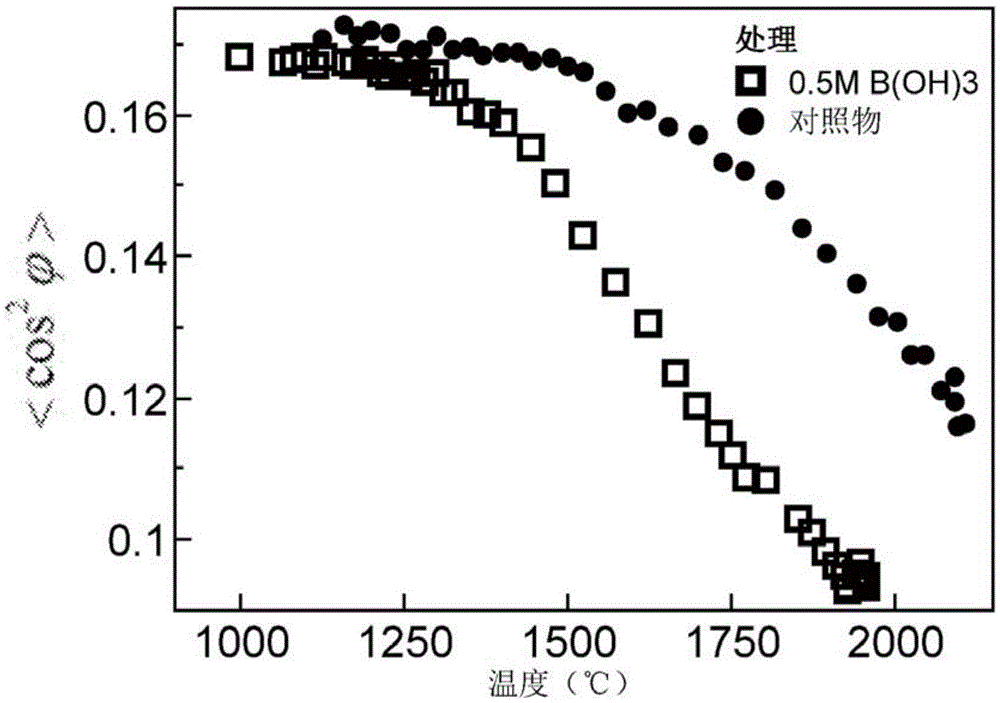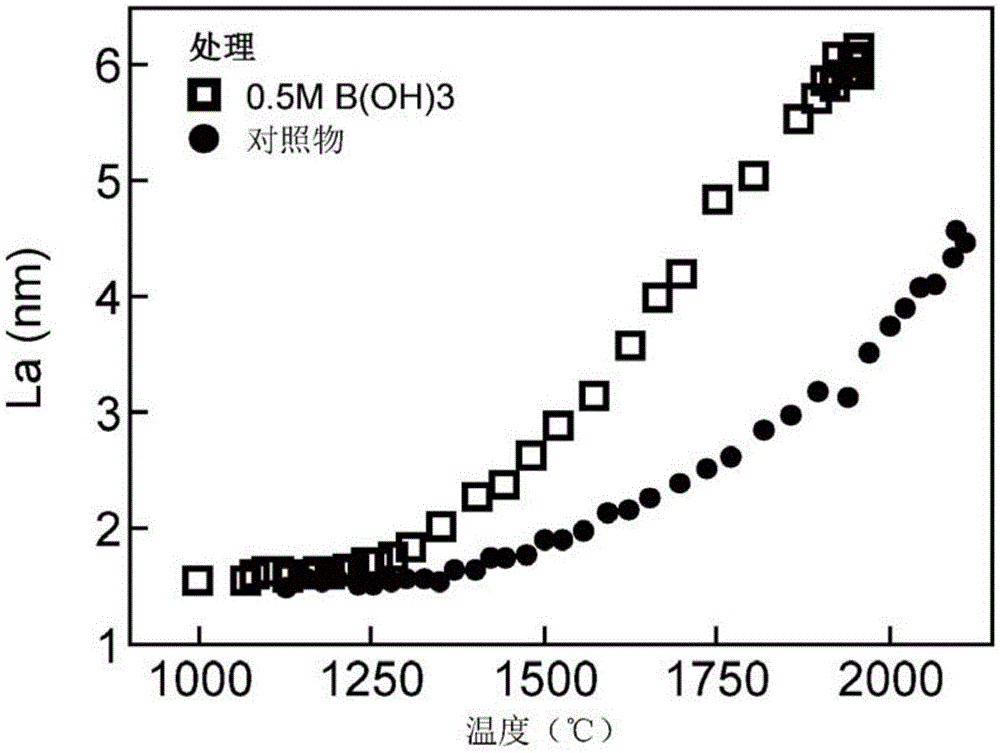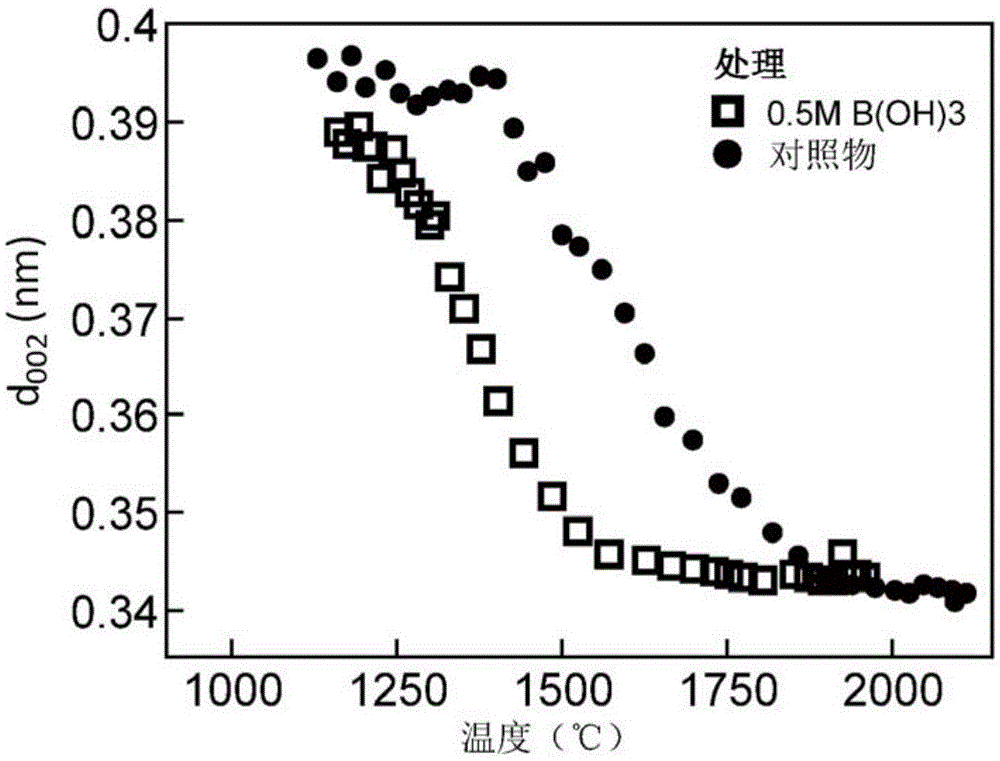Polyolefin-derived carbon fibers containing boron
A polyolefin fiber, carbon fiber technology, applied in the direction of carbon fiber, fiber treatment, fiber type, etc., can solve the problems of reduced tensile strength, high graphitization temperature, and reduced fiber tensile strength.
- Summary
- Abstract
- Description
- Claims
- Application Information
AI Technical Summary
Problems solved by technology
Method used
Image
Examples
example
[0041] Polyethylene / 1-octene copolymer (melt index 30; density 0.9550 g / ml; polydispersity 3.0) was melt spun into continuous fiber bundles containing 1700 filaments (tenacity 4.4 g / denier Neil; elongation at break is 8.4%; diameter is 8.2 microns). The tow was sulfonated in a 4 bath continuous process at 25 megapascal (MPa) tension in the first bath and at 15 MPa tension in subsequent baths. Fiber bundles were fed in each bath at a rate corresponding to a residence time of about 60 minutes. The first bath was 20 mole percent (mol %) oleum at 50°C. The second bath was 96 mole percent sulfuric acid at 120°C. The third bath was 96 mole percent sulfuric acid at 140°C. For Comparative Examples A and B, the fourth bath was deionized water, for Examples 1-5 the fourth bath was various concentrations of boric acid (BA) in water and for Example 5 the fourth bath was 0.082 molar phenyl Aqueous solution of boric acid (PBA). The fibers are wound onto bobbins from the fourth bath.
...
PUM
| Property | Measurement | Unit |
|---|---|---|
| Diameter | aaaaa | aaaaa |
Abstract
Description
Claims
Application Information
 Login to view more
Login to view more - R&D Engineer
- R&D Manager
- IP Professional
- Industry Leading Data Capabilities
- Powerful AI technology
- Patent DNA Extraction
Browse by: Latest US Patents, China's latest patents, Technical Efficacy Thesaurus, Application Domain, Technology Topic.
© 2024 PatSnap. All rights reserved.Legal|Privacy policy|Modern Slavery Act Transparency Statement|Sitemap



